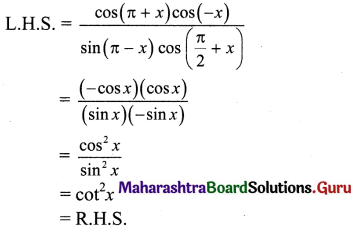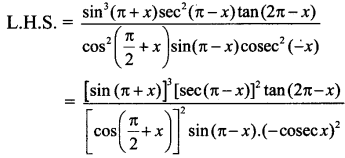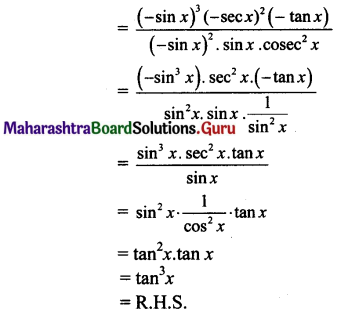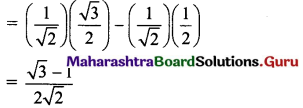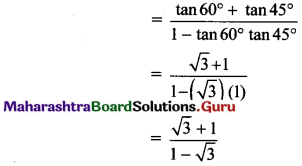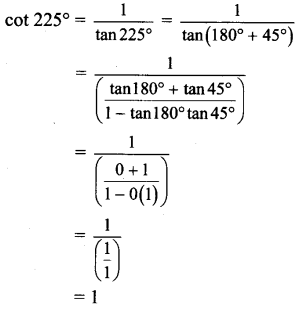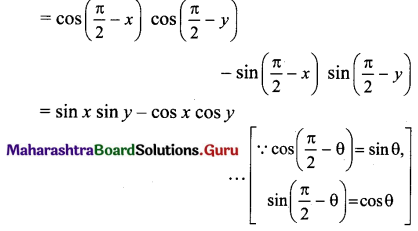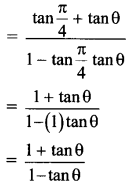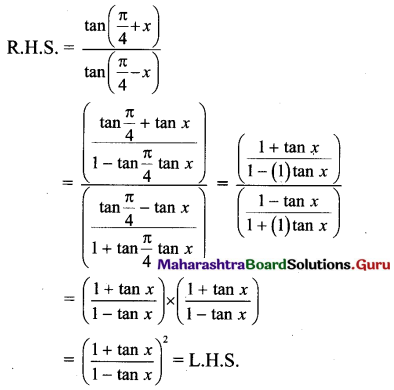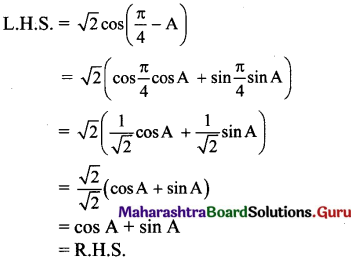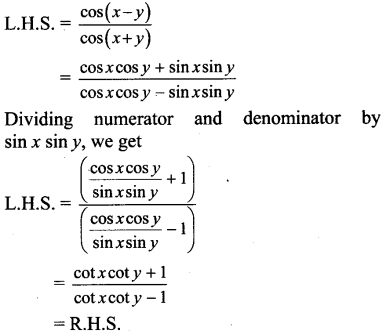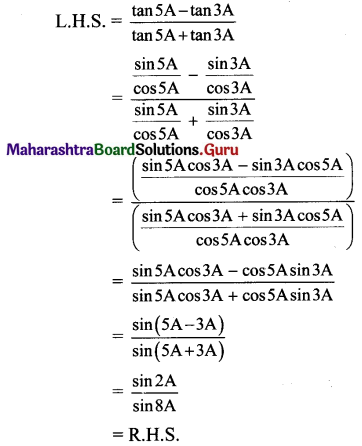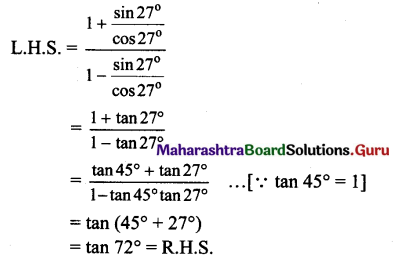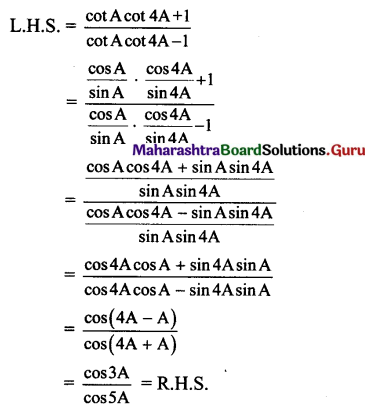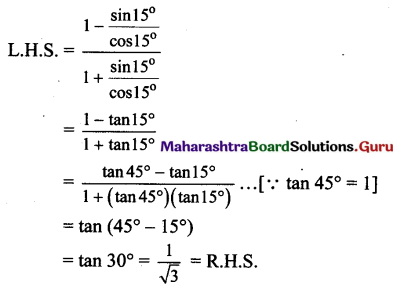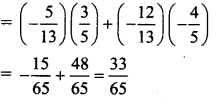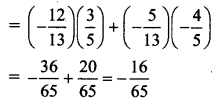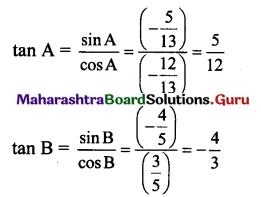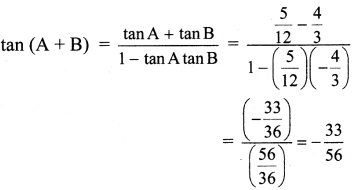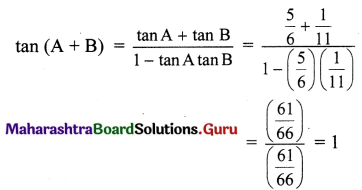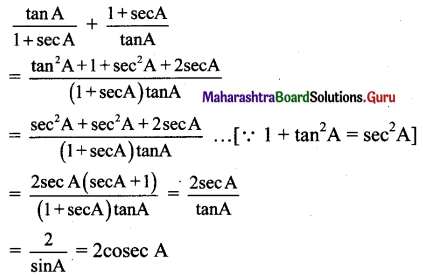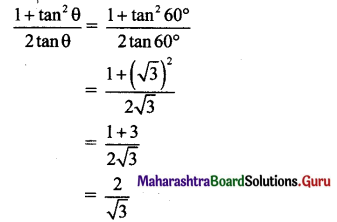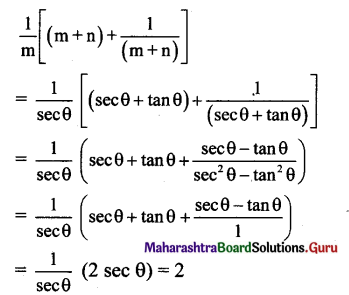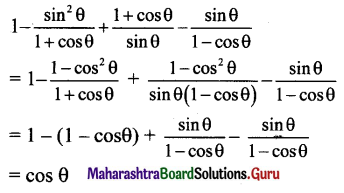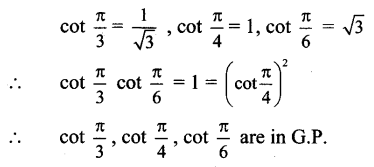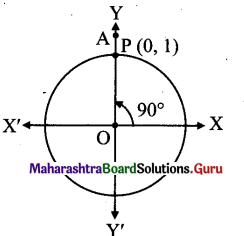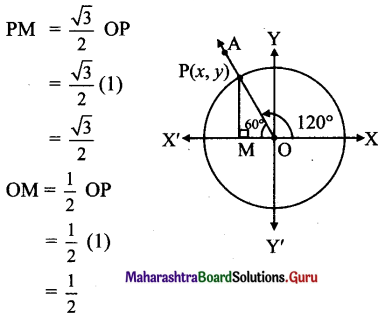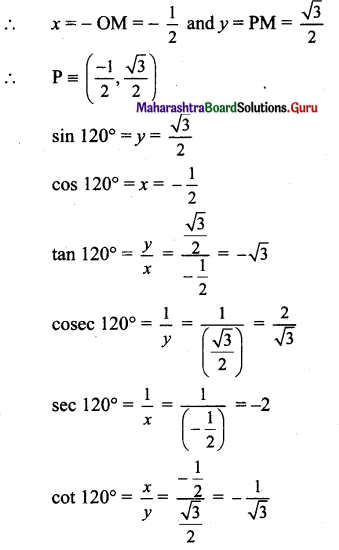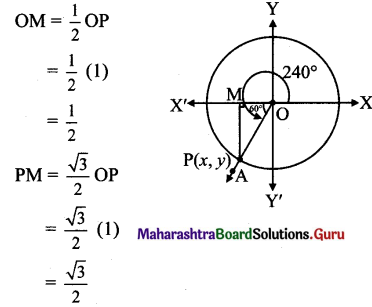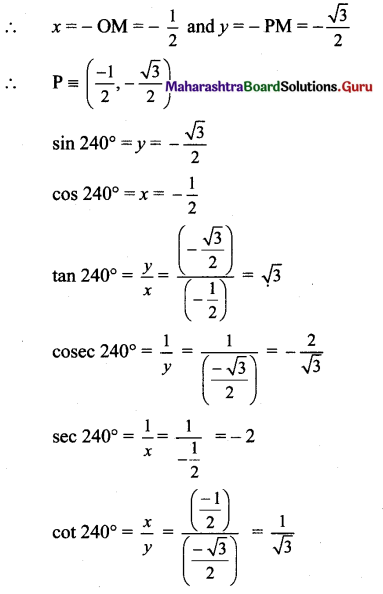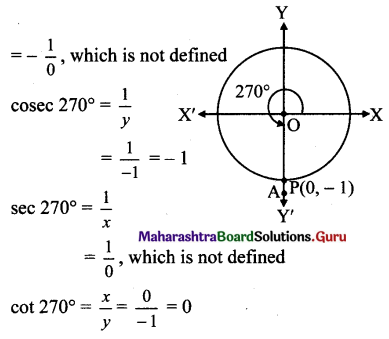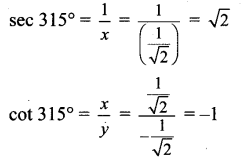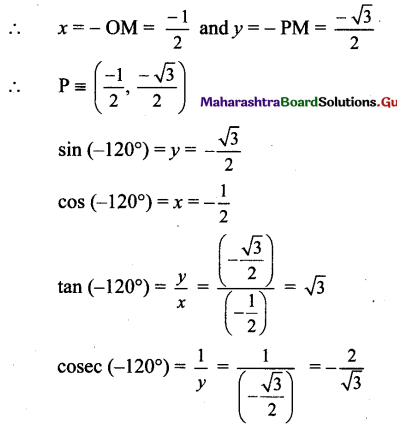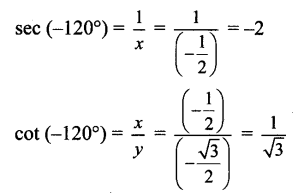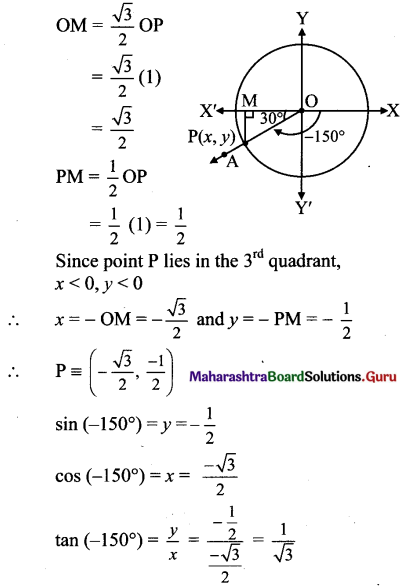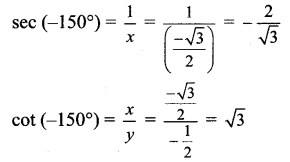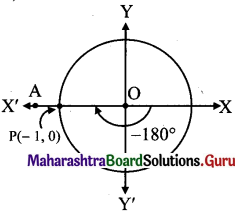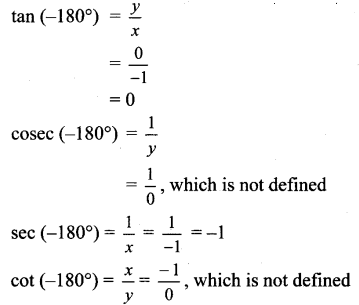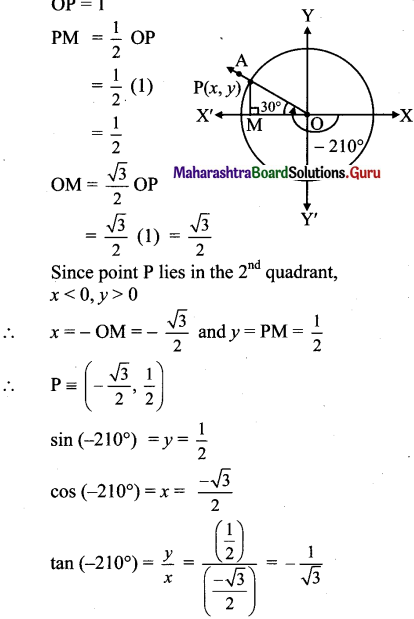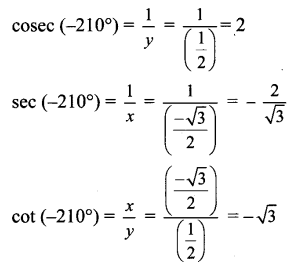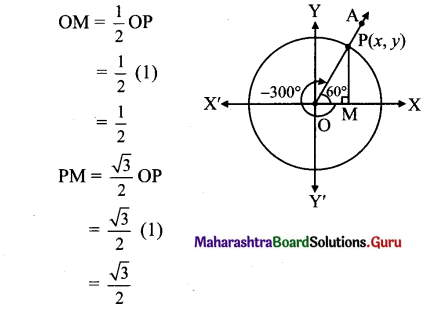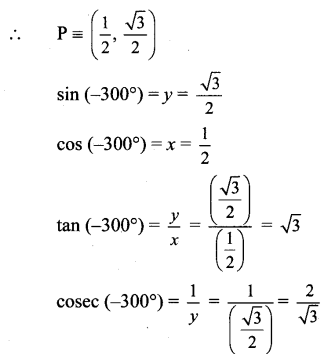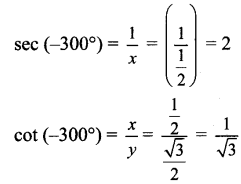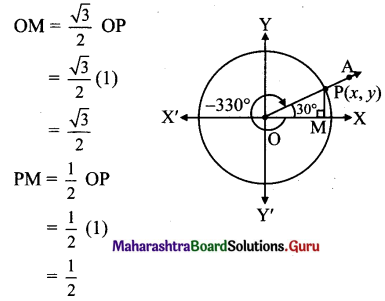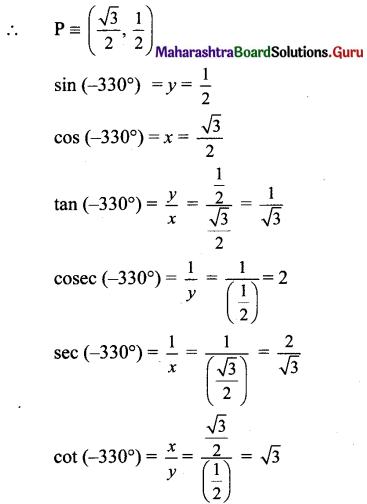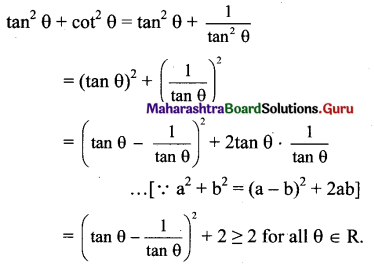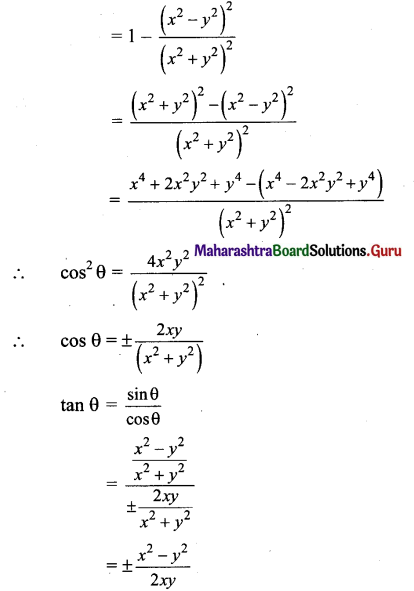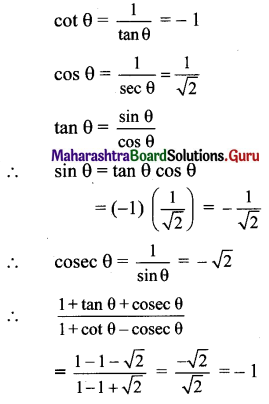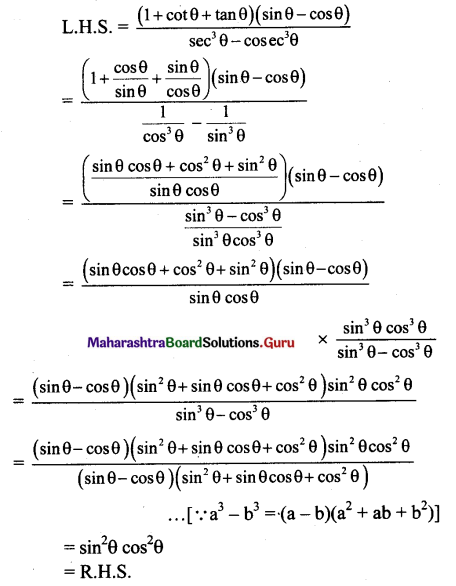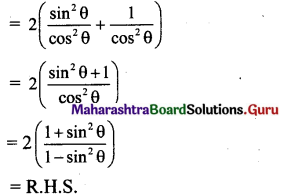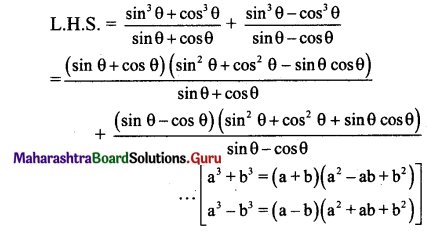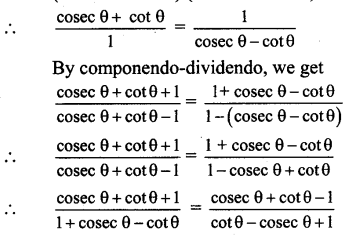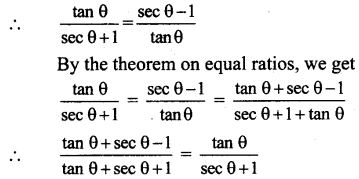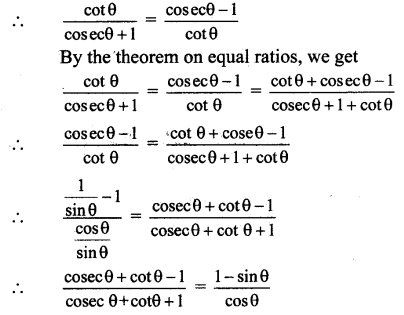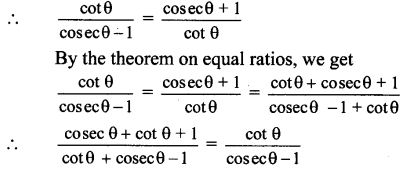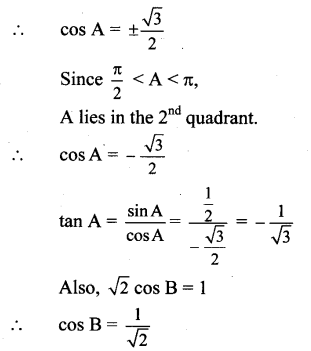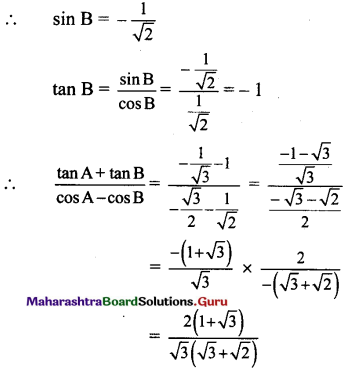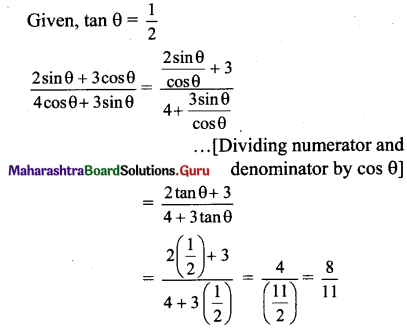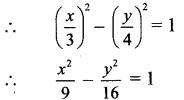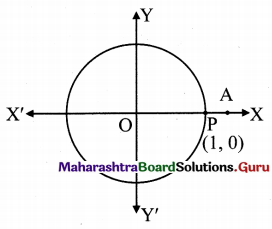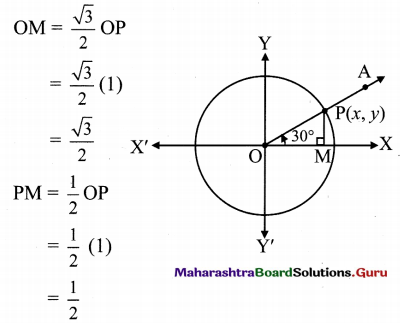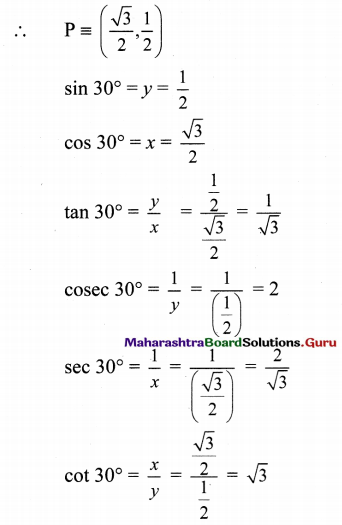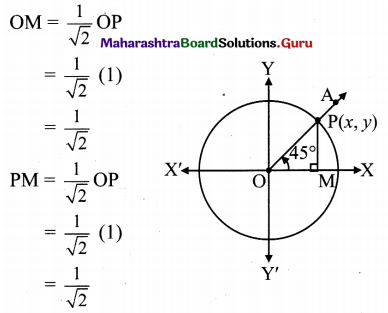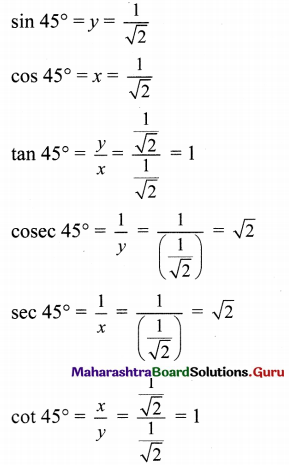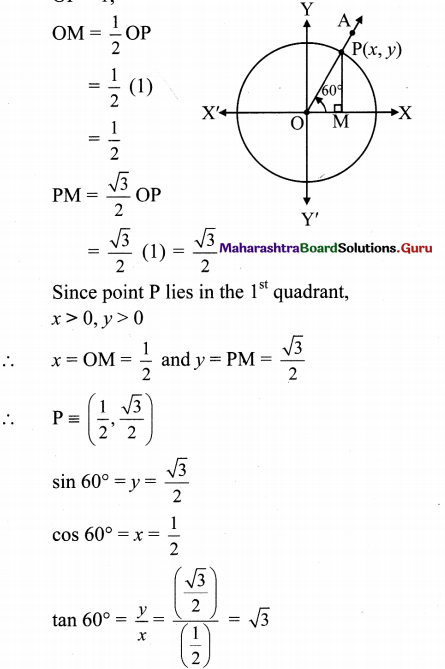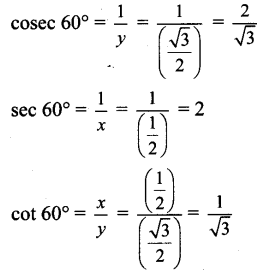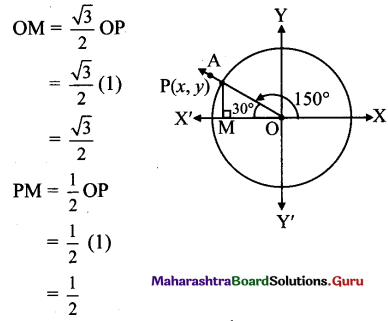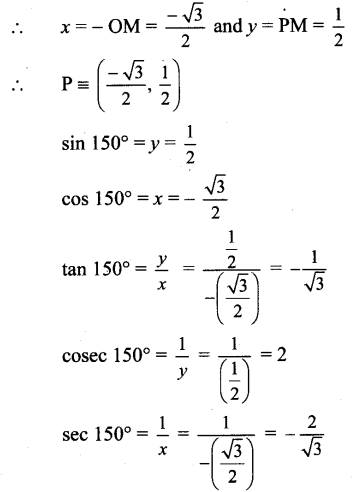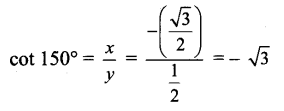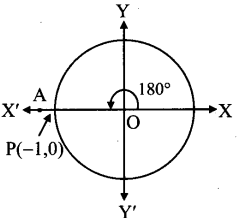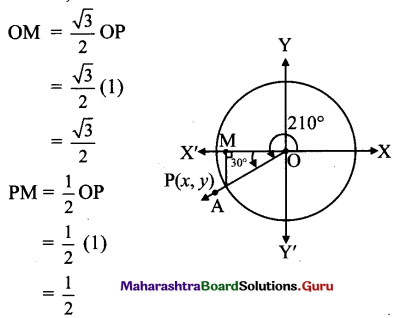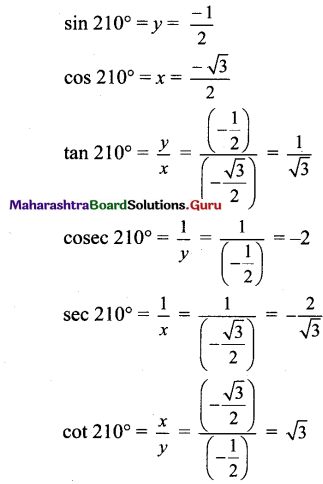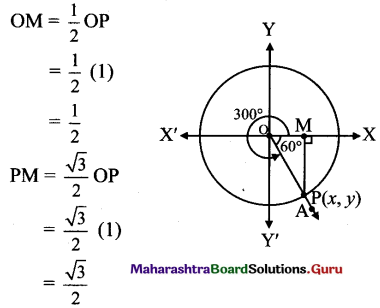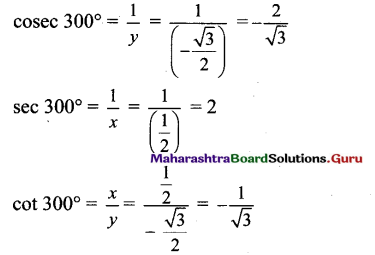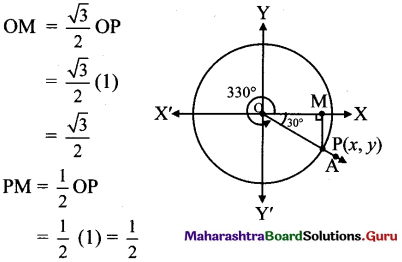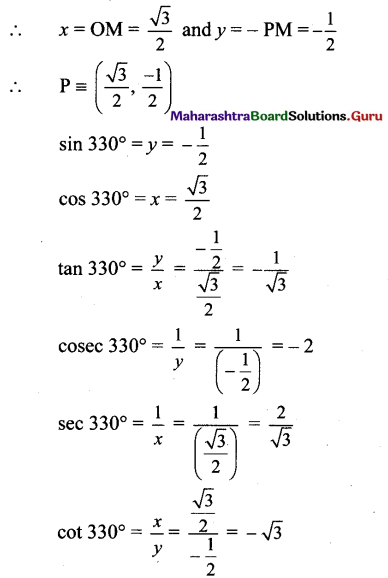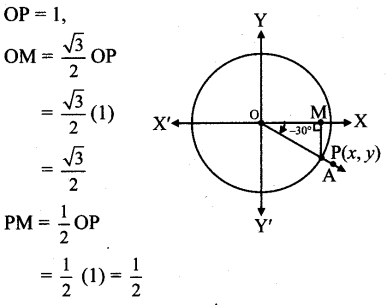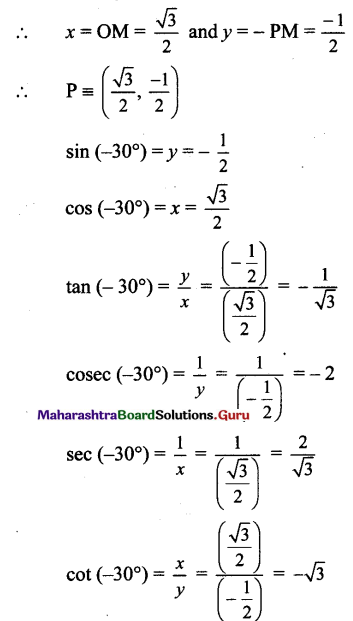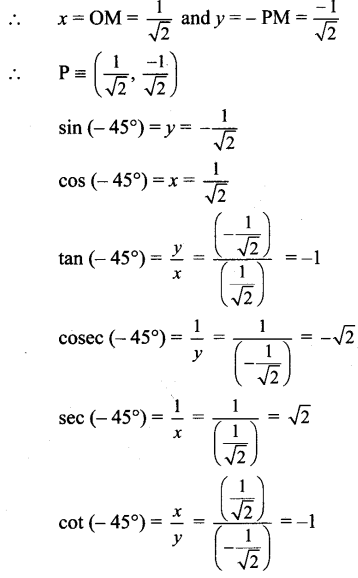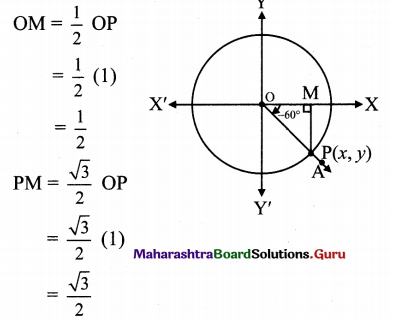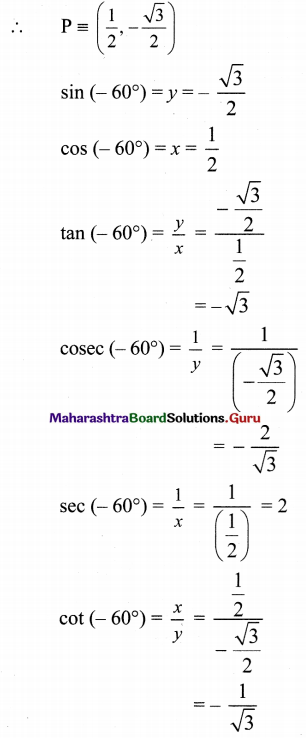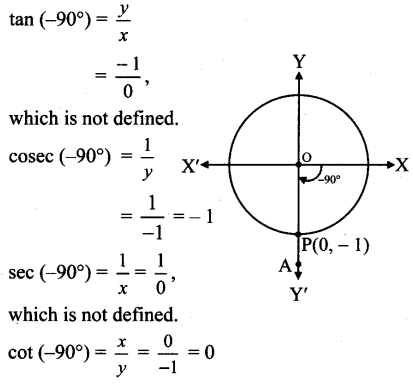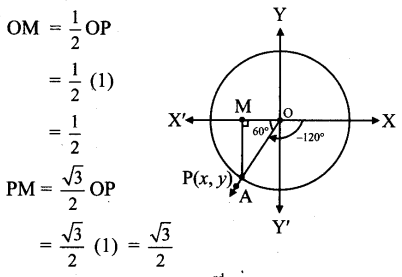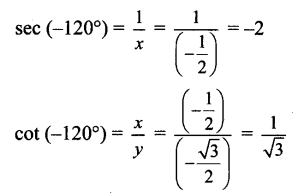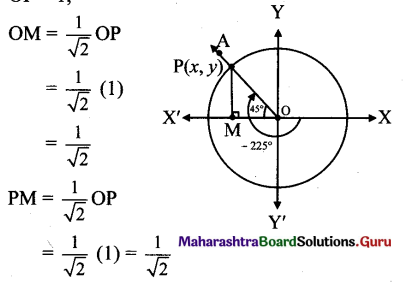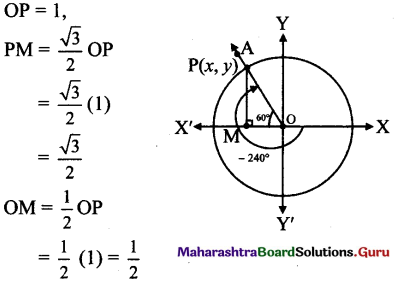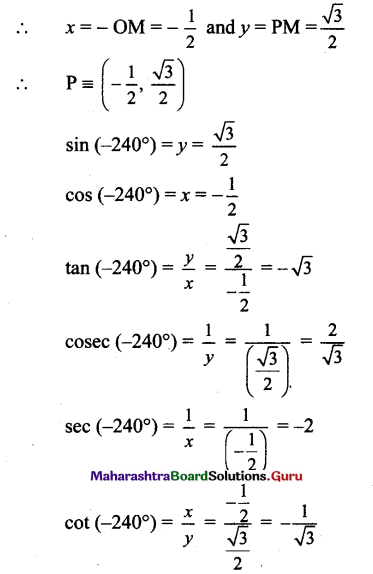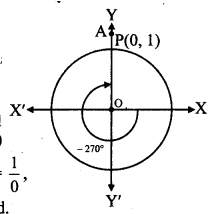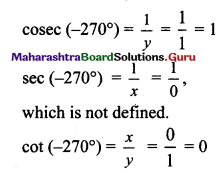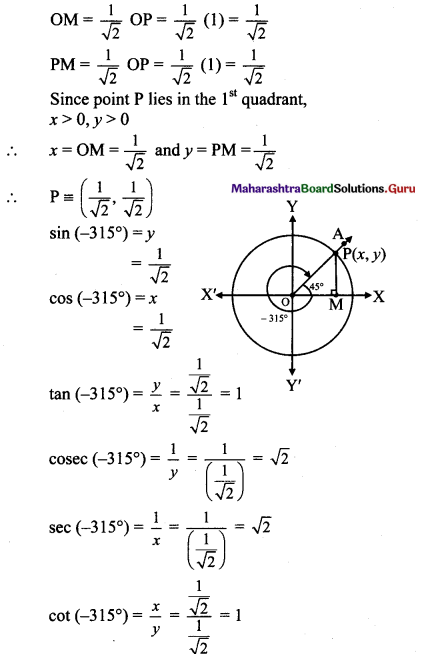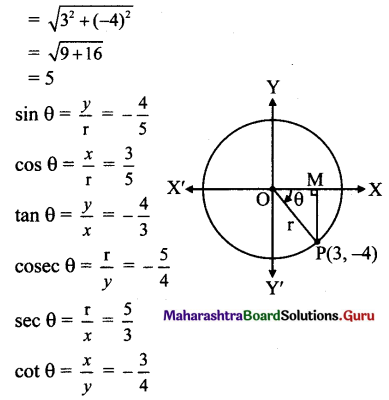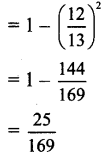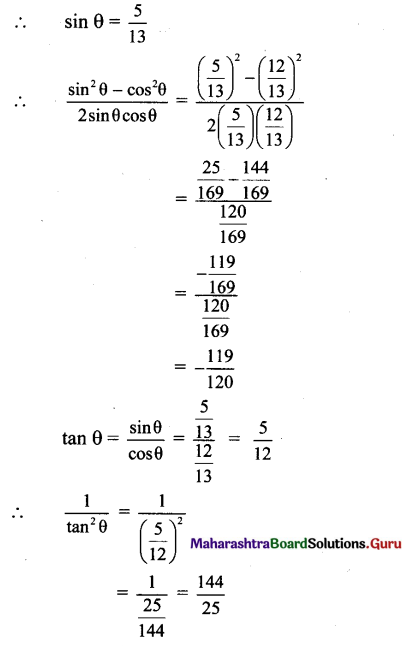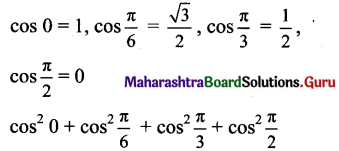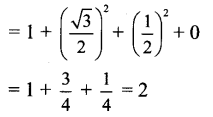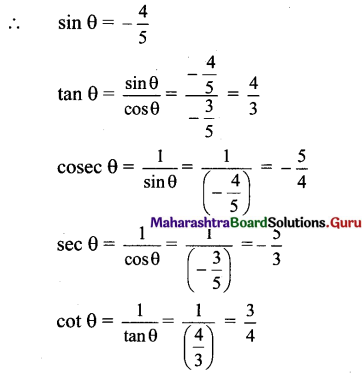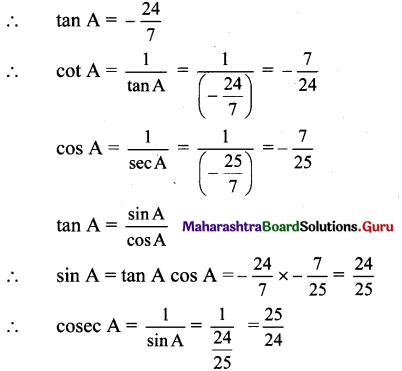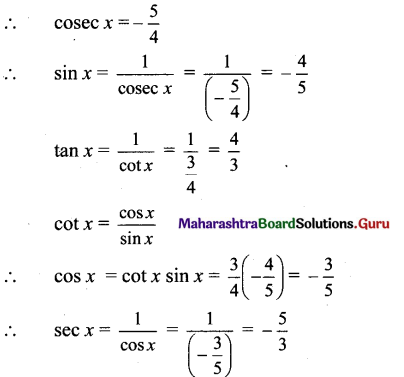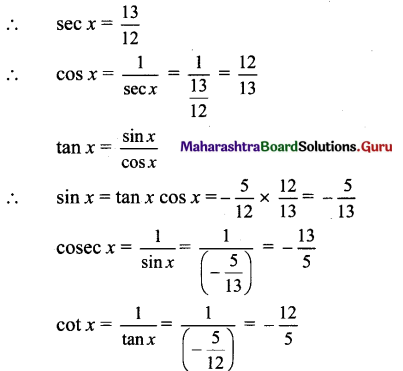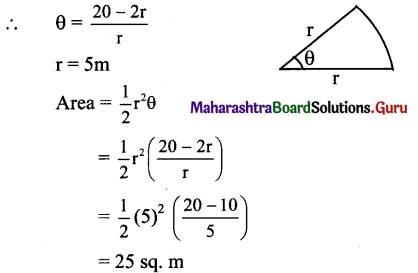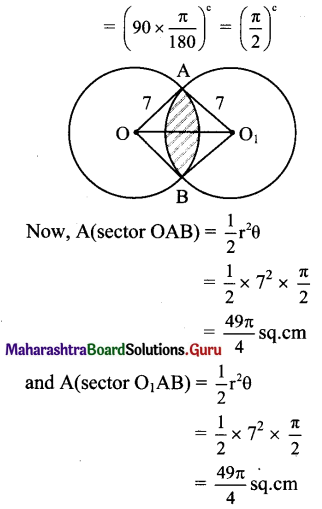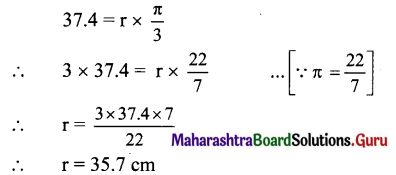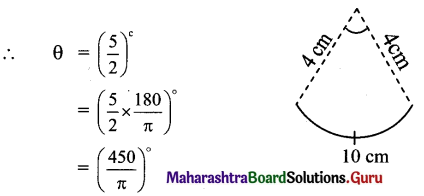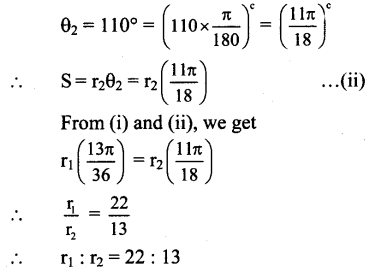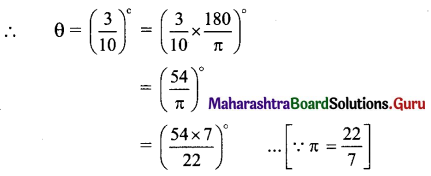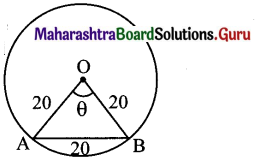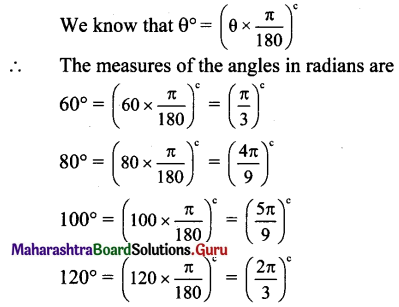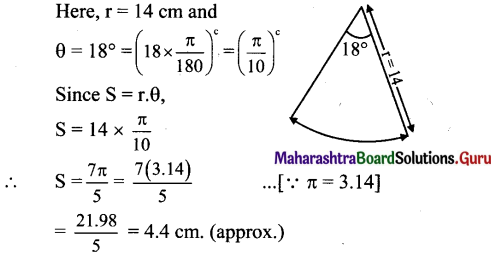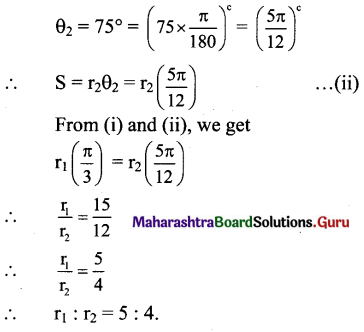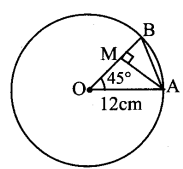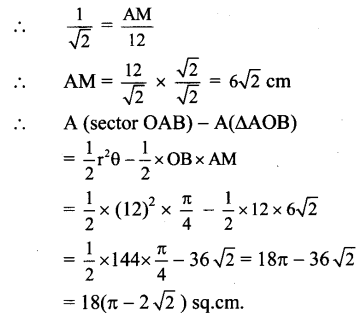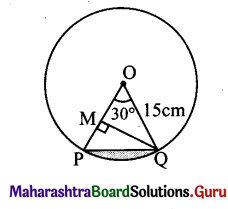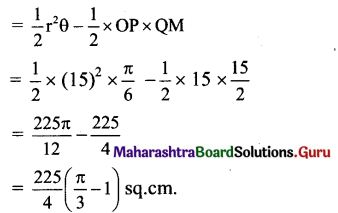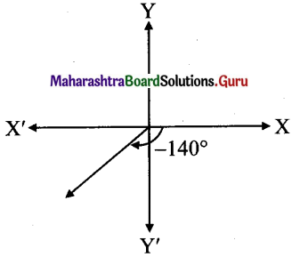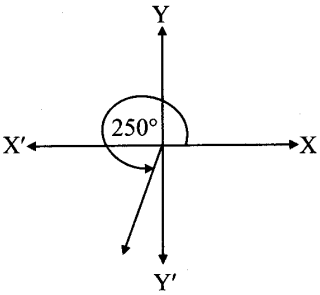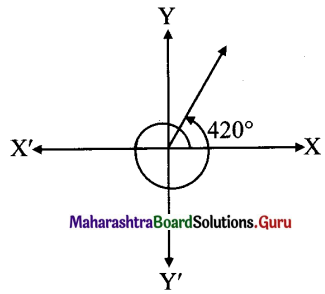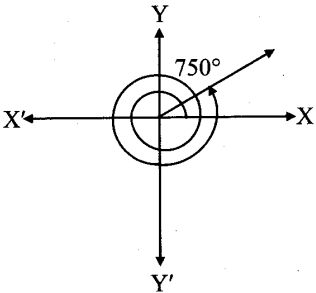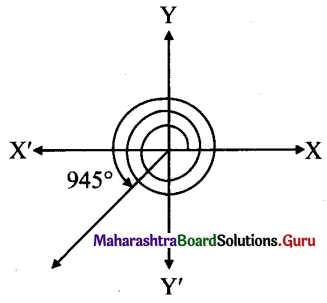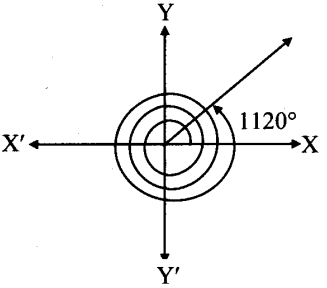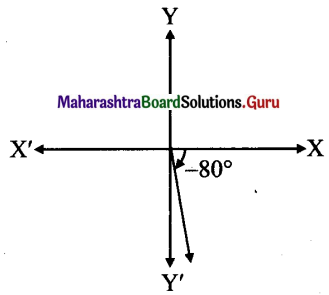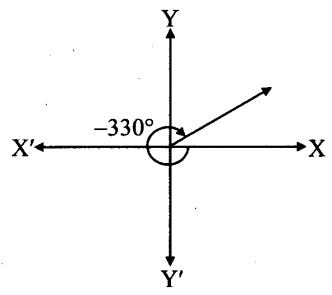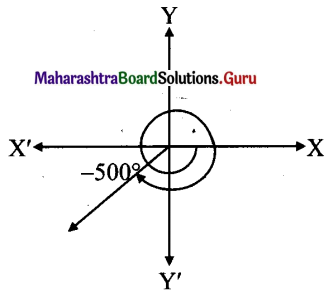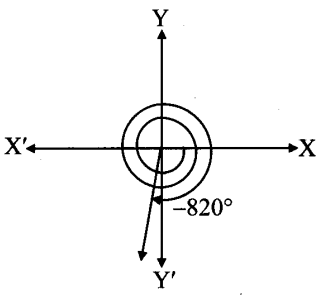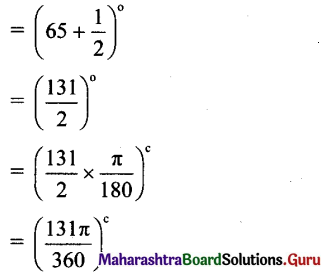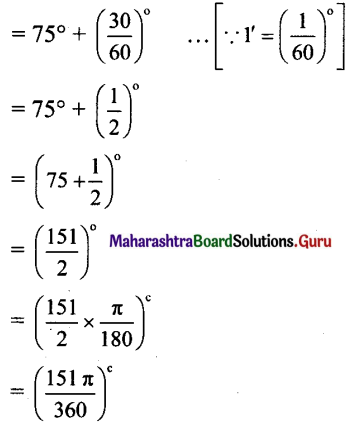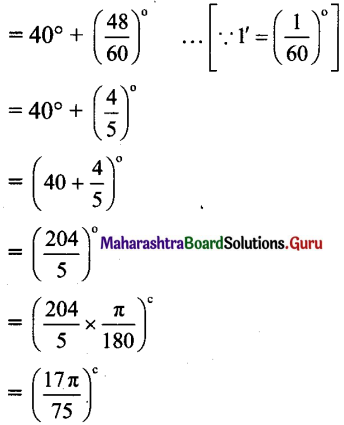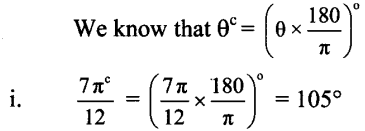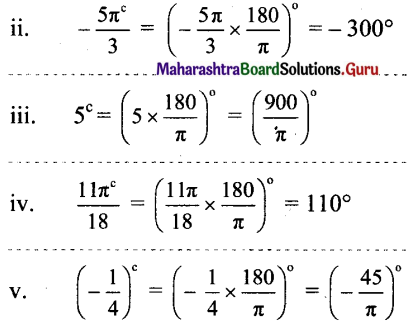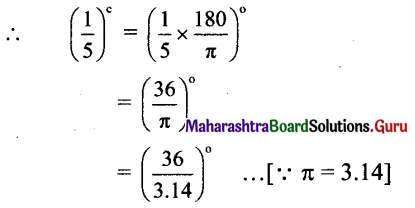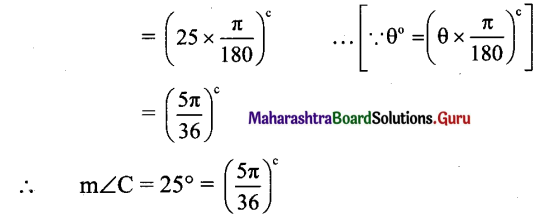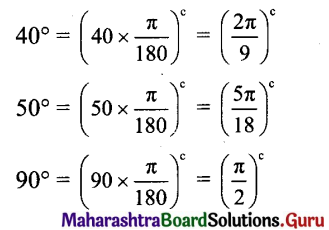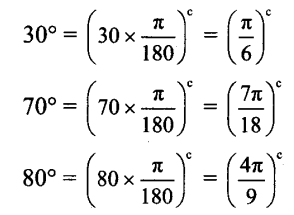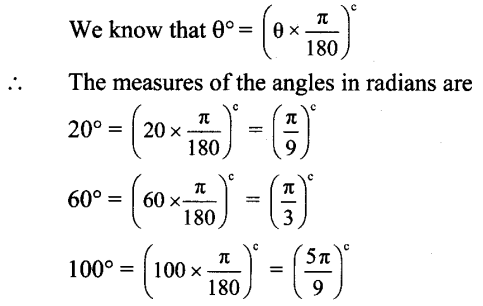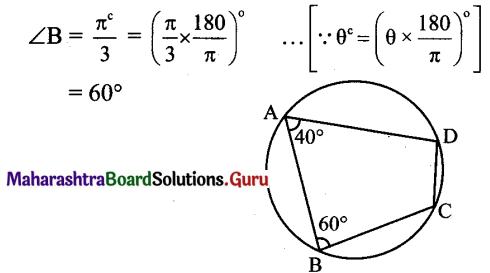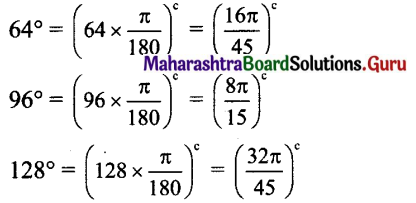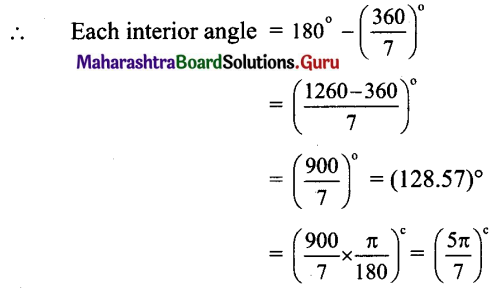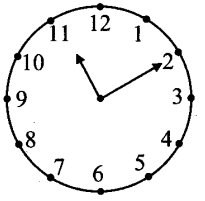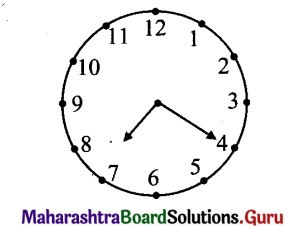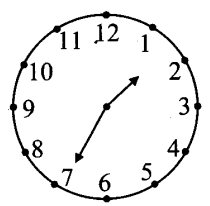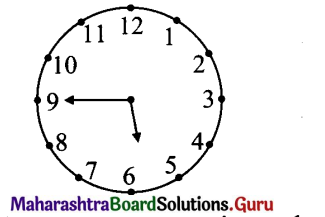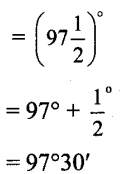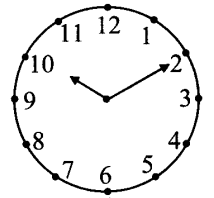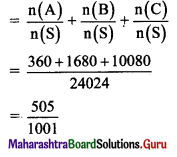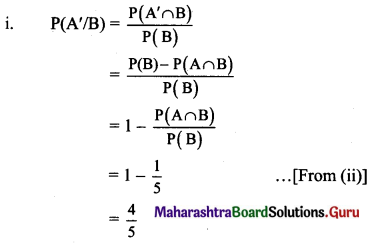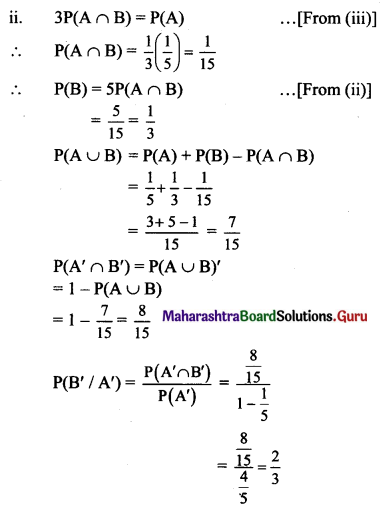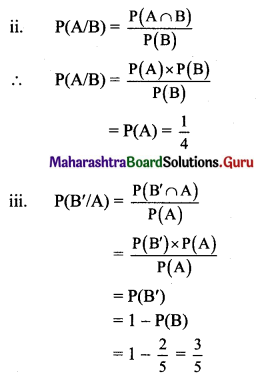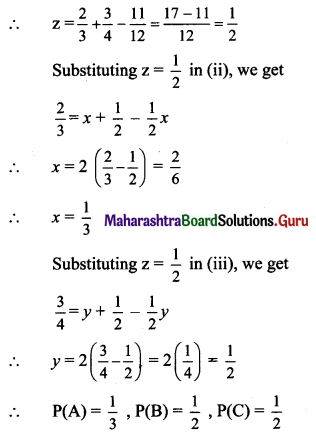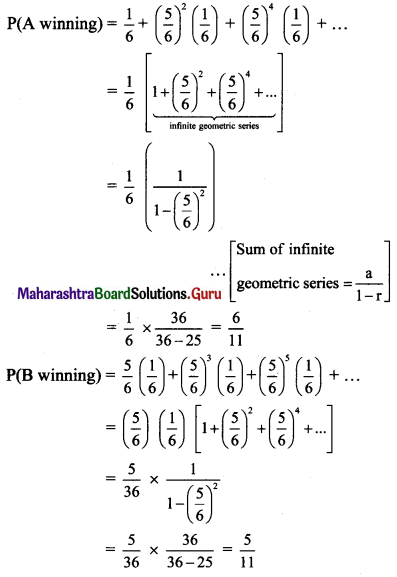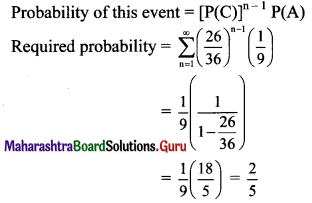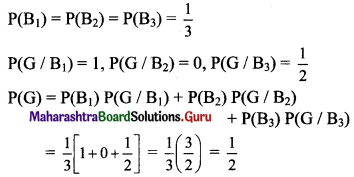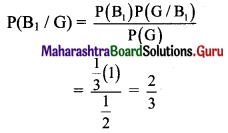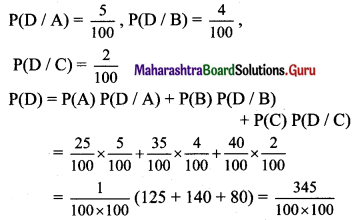Balbharti Maharashtra State Board Class 11 Maths Solutions Pdf Chapter 3 Trigonometry – II Ex 3.3 Questions and Answers.
11th Maths Part 1 Trigonometry – II Exercise 3.3 Questions And Answers Maharashtra Board
Question 1.
Find the values of:
i. sin \(\frac{\pi}{8}\)
ii. \(\frac{\pi}{8}\)
Solution:
We know that sin2 θ = \(\frac{1-\cos 2 \theta}{2}[/atex]
Substituting θ = [latex]\frac{\pi}{8}\), we get
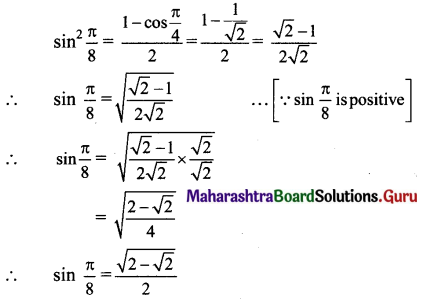
![]()
ii. We know that, cos2 θ = \(\frac{1+\cos 2 \theta}{2}\)
Substituting θ = \(\frac{\pi}{8}\), we get
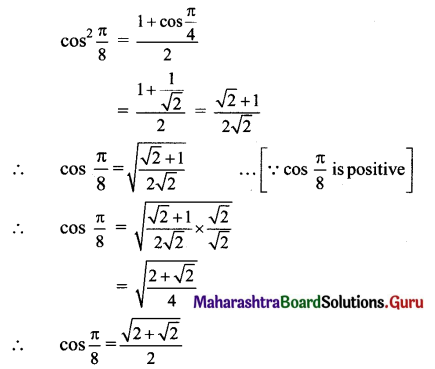
Question 2.
Find sin 2x, cos 2x, tan 2x if sec x = \(-\frac{13}{5}\), \(\frac{\pi}{2}\) < x < π
Solution:
sec x = \(-\frac{13}{5}\), \(\frac{\pi}{2}\) < x < π
We know that
Sect2 x = 1 + tan2x
tan2x = \(\frac{169}{25}-1=\frac{144}{25}\)
tan x = \(\pm \frac{12}{5}\)
Since \(\frac{\pi}{2}\) < x < π
x lies in the 2nd quadrant.
tan x < 0
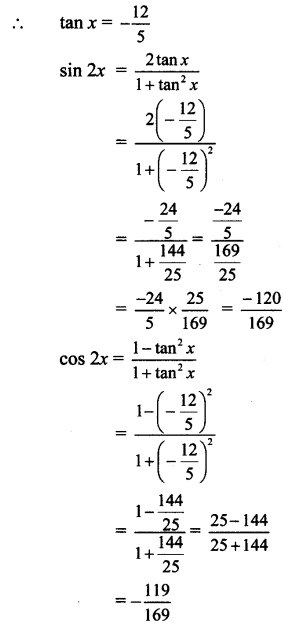
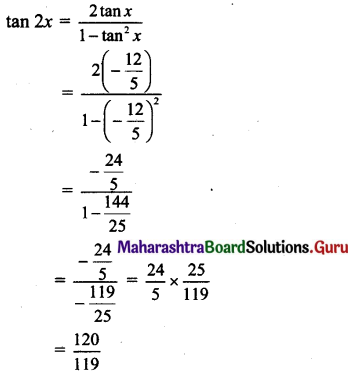
Question 3.
i. \(\) = tan2 θ
Solution:
L. H. S. = \(\frac{1-\cos 2 \theta}{1+\cos 2 \theta}\)
= \(\frac{2 \sin ^{2} \theta}{2 \cos ^{2} \theta}\)
= 2tan2 θ
= R.H.S.
ii. (sin 3x + sin x) sin x + (cos 3x – cos x) cos x = 0
Solution:
L.H.S. = (sin 3x + sin x) sin x + (cos 3x – cosx)cosx
= sin 3x sin x + sin2 x + cos 3x cos x – cos2 x
= (cos 3x cos x + sin 3x sin x)
— (cos2x — sin2x)
= cos (3x – x) – cos 2x
= cos 2x – cos 2x
= 0
= R.H.S.
![]()
iii. (cos x + cos y )2 + (sin x + sin y)2 = 4cos2 \(\left(\frac{x-y}{2}\right)\)
Solution:
L.H.S. = (cos x + cos y)2 + (sin x + sin y)2
= cos2x + cos2y + 2cos x.cos y + sin2 x + sin2y + 2sin x.siny
= (cos2x + sin2x) + (cos2y + sin2y) + 2(cos x.cos y + si x.sin y)
= 1 + 1 +2cos(x – y)
= 2 + 2 cos (x – y)
= 2[1 + cos(x – y)]
= 2[2cos2 [(\(\left(\frac{x-y}{2}\right)\))] … [∵ 1 + cos θ = 2 cos2 \(\frac{\theta}{2}\)]
= 4 cos2 (\(\frac{x-y}{2}\))
= R.H.S.
[ Note: The question has been modified]
iv. (cos x – cos y)2 + (sin x – sin y)2 = 4sin2 \(\left(\frac{x-y}{2}\right)\)
Solution:
L.H.S. = (cos x – cos y)2 + (sin x – sin y)2
= cos2x + cos2y + 2cos x.cos y + sin2 x + sin2y + 2sin x.siny
= (cos2x + sin2x) + (cos2y + sin2y) – 2(cos x.cos y + sin x.sin y)
= 1 + 1 – 2cos(x – y)
= 2 – 2 cos (x – y)
= 2[1 – cos(x – y)]
= 2[2sin2 [(\(\left(\frac{x-y}{2}\right)\))] … [∵ 1 – cos θ = 2 sin2 \(\frac{\theta}{2}\)]
= 4 sin2 (\(\frac{x-y}{2}\))
= R.H.S.
v. tan x + cot x = 2 cosec 2x
Solution:
L.H.S. = tan x + cot x
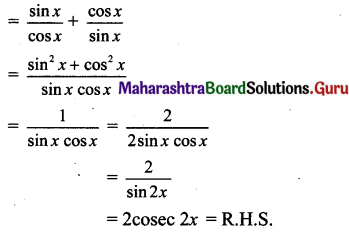
vi. \(\frac{\cos x+\sin x}{\cos x-\sin x}-\frac{\cos x-\sin x}{\cos x+\sin x}\) = 2 tan 2x
Solution:
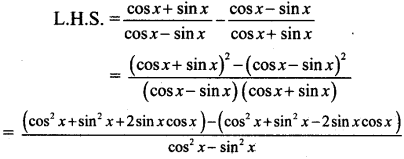
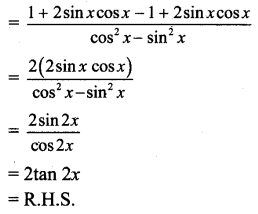
![]() vii. \(\sqrt{2+\sqrt{2+\sqrt{2+2 \cos 8 x}}}\) = 2 cos x
vii. \(\sqrt{2+\sqrt{2+\sqrt{2+2 \cos 8 x}}}\) = 2 cos x
Solution:

= 2 cos x
= R.H.S.
[Note : The question has been modified.]
viii. 16 sin θ cos θ cos 2θ cos 4θ cos 8θ = sin 16θ
Solution:
L.H.S. = 16 sin θ cos θ cos 2θ cos 4θ cos 8θ
= 8(2sinθ cosθ) cos2θ cos 4θ cos 8θ
= 8sin 2θ cos 2θ cos 4θ cos 8θ
= 4(2sin 2θ cos 2θ) cos 4θ cos 8θ
= 4sin 4θ cos 4θ cos 8θ
= 2(2sin 4θ cos 4θ) cos 8θ
= 2sin 8θ cos 8θ
= sin 16θ
= R.H.S.
ix. \( = 2 cot 2x
Solution:

x. [latex]\frac{\cos x}{1+\sin x}=\frac{\cot \left(\frac{x}{2}\right)-1}{\cot \left(\frac{x}{2}\right)+1}\)
Solution:
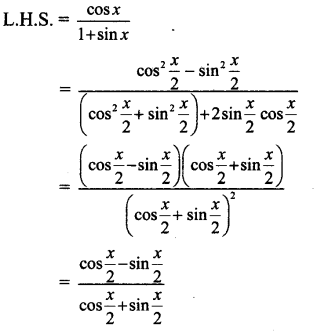
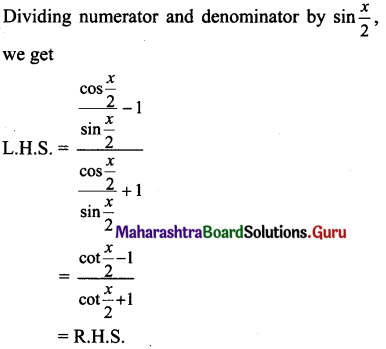
![]()
xi. \(\frac{\tan \left(\frac{\theta}{2}\right)+\cot \left(\frac{\theta}{2}\right)}{\cot \left(\frac{\theta}{2}\right)-\tan \left(\frac{\theta}{2}\right)}=\sec \theta\)
Solution:
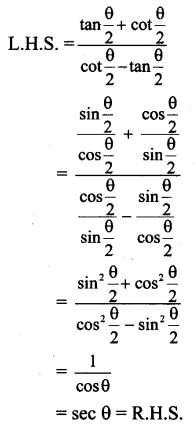
xii. \(\frac{1}{\tan 3 \mathbf{A}-\tan A}-\frac{1}{\cot 3 A-\cot A}\) = cot 2A
Solution:
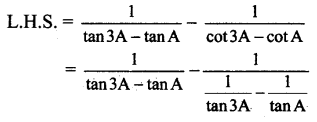
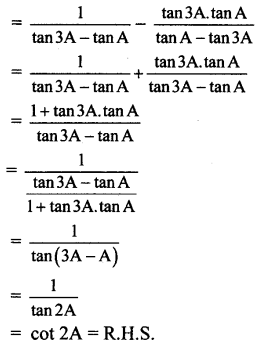
![]()
xiii. cos 7° cos 14° cos 28° cos 56° \(\frac{\sin 68^{\circ}}{16 \cos 83^{\circ}}\)
Solution:
L.H.S. = cos 7° cos 14° cos 28° cos 56°
= \(\frac{1}{2 \sin 7^{\circ}}\)(2sin 7°cos 7°)cos 14°cos 28°cos 56°
= \(\frac{1}{2 \sin 7^{\circ}}\) (sin 14° cos 14° cos 28° cos 56°)
…[∵ 2sinθ cosθ = sin 2θ]
= [\frac{1}{2\left(2 \sin 7^{\circ}\right)}latex][/latex] (2sin 14° cos 14°) cos 28° cos 56°
= \(\frac{1}{4 \sin 7^{\circ}}\)(sin 28° cos 28° cos 56°)
= \(\frac{1}{2\left(4 \sin 7^{\circ}\right)}\)(2 sin 28° cos 28°) cos 56°
= \(\frac{1}{8 \sin 7^{\circ}}\) (sin 56° cos 56°)
= \(\frac{1}{8 \sin 7^{\circ}}\) (2 sin 56° cos 56°)
= \(\frac{1}{16 \sin 7^{\circ}}\)(sin 112°)
= \(\frac{\sin \left(180^{\circ}-68^{\circ}\right)}{16 \sin \left(90^{\circ}-83^{\circ}\right)}\)
= \(\frac{\sin 68^{\circ}}{16 \cos 83^{\circ}}\)
= R.H.S.
xiv. = \(\frac{\sin ^{2}\left(-160^{\circ}\right)}{\sin ^{2} 70^{\circ}}+\frac{\sin \left(180^{\circ}-\theta\right)}{\sin \theta}\) = sec2 20°
Solution:
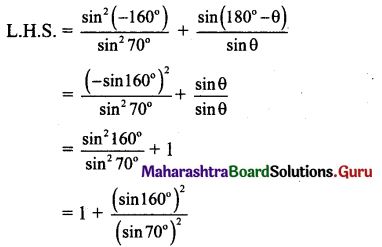
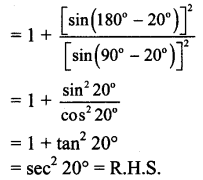
xv. \(\frac{2 \cos 4 x+1}{2 \cos x+1}\) = (2 cos x – 1)(2 cos 2x – 1)
Solution:
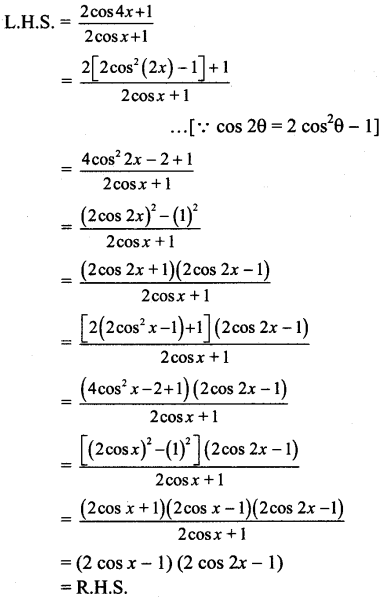
xvi. = cos2 x + cos2 (x + 120°) + cos2(x – 120°) = \(\frac{3}{2}\)
Solution:
L.H.S = cos2 x + cos2 (x + 120°) + cos2(x – 120°) =
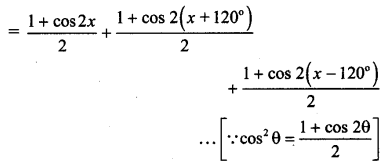
\(\frac{3}{2}+\frac{1}{2}\) [cos 2x + cos(2x + 240°) + cos(2x 240°)]
= \(\frac{3}{2}+\frac{1}{2}\)(cos 2x + cos 2x cos 240°— sin 2x sin 240° + cos 2x cos 240° + sin 2x sin 240°)
= \(\frac{3}{2}+\frac{1}{2}\)(cos 2x + 2 cos 2x cos 240°)
= \(\frac{3}{2}+\frac{1}{2}\) [cos 2x + 2 cos 2x cos( 180° + 60°)]
= \(\frac{3}{2}+\frac{1}{2}\) [cos 2x + 2cos 2x(-cos 600)]
= \(\frac{3}{2}+\frac{1}{2}\) [cos 2x —2 cos 2x(\(\frac{1}{2}\))]
= \(\frac{3}{2}+\frac{1}{2}\) ( cos 2x – cos 2x)
= \(\frac{3}{2}+\frac{1}{2}\) (0)
= \(\frac{3}{2}\) = R.H.S.
![]()
xvii. 2 cosec 2x + cosec x = sec cot \(\frac{x}{2}\)
Solution:
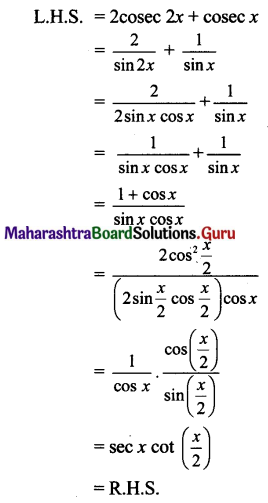
xviii. 4 cos x cos (\(\frac{\pi}{3}\) + x) cos (\(\frac{\pi}{3}\) – x) = cos 3x
\(\)
Solution:

= cos3x — 3cos x.sin2x
= cos3 x — 3cos x (1— cos2 x)
= cos3x — 3cos x + 3 cos3x
=4 cos3x — 3cos x
= cos 3x = R.H.S.
INote: The question has been modijìed.I
xix. sin x tan \(\frac{x}{2}\) + 2cos x = \(\frac{2}{1+\tan ^{2}\left(\frac{x}{2}\right)}\)
Solution:
L.H.S. = sin x tan (x/2)+ 2cos x
= \(\left(2 \sin \frac{x}{2} \cos \frac{x}{2}\right)\left(\frac{\sin \frac{x}{2}}{\cos \frac{x}{2}}\right)\) + 2cos x
= \(\left(2 \sin \frac{x}{2} \cos \frac{x}{2}\right)\left(\frac{\sin \frac{x}{2}}{\cos \frac{x}{2}}\right)\) + 2 cos x
= 2sin2 x/2 + 2cosx
= 1 – cosx + 2cosx
= 1 + cos x
=2cos2 x/2
= \(\frac{2}{\sec ^{2} \frac{x}{2}}=\frac{2}{1+\tan ^{2} \frac{x}{2}}\) =R.H.S.
Maharashtra State Board 11th Maths Solutions
- Trigonometry – II Ex 3.1 Class 11 Maths Solutions
- Trigonometry – II Ex 3.2 Class 11 Maths Solutions
- Trigonometry – II Ex 3.3 Class 11 Maths Solutions
- Trigonometry – II Ex 3.4 Class 11 Maths Solutions
- Trigonometry – II Ex 3.5 Class 11 Maths Solutions
- Trigonometry – II Miscellaneous Exercise 3 Class 11 Maths Solutions
